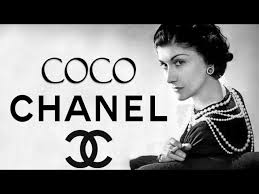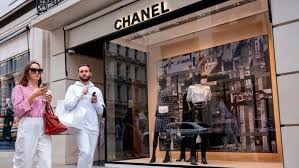Chanel represents more than just a brand but is the emblem of eternal glamour, innovation, and revolution within the world of fashion. This label has stood the test of time since the original founder, Gabrielle “Coco” Chanel, created the brand in 1910 with a constant stream of challenges thrown at it. It continues to set trends with an air of class that has managed to reach a global audience with its iconic designs and revolutionary perfumes.
A Legacy Rooted in Innovation
It revolutionized the world of fashion in terms of simplicity and comfort into an industry dominated by restrictive garments. At a time when corsets and elaborate dresses were the norm, she dared to break away the mold by focusing on practicality, elegance, and freedom of movement into an alternative mean of designing femininity. Her designs challenged restrictions and freed women from conventional patterns.
The first major success was when jersey fabric became a part of women’s clothing. Traditionally used for men’s undergarments, jersey proved inexpensive, comfortable, and versatile to use. It revolutionized the use of this fabric as a precursor to modern casual clothing.
Perfumery’s new icon in 1921, Chanel No. 5 was one of the very first complex scents in which multiple floral notes were combined in a perfume. It has always been considered one of the finest examples of fragrance craftsmanship, representing an icon of luxury and sophistication for the brand.
Iconic Designs That Define Chanel

The Little Black Dress (LBD)
The little black dress, according to Coco Chanel in the 1920s, was quite a revolutionary idea. Before that, black used to be mainly for mourning. It was transformed into a versatile elegant staple by it for wearing on any occasion. Vogue famously referred to the LBD as “a sort of uniform for all women of taste” and remains the wardrobe staple. The LBD was a testament of it’s ideology: luxury can be comfortable as well as accessible.
The Chanel Suit
The Chanel suit, first designed in 1925, broke away from the rigid corseted designs of the time. Crafted from tweed and featuring a collarless jacket and fitted skirt, it offered women a balance of elegance and freedom. The suit’s practicality and sophistication made it a favorite among influential women, including Jackie Kennedy. Its timeless appeal lies in its ability to convey power, confidence, and grace.
The Quilted Handbag
In February 1955, the Chanel 2.55 handbag was released and is one of the timeless accessories that marry utility with sophistication. The quilted leather bag has a chain strap that would allow women to carry their stuff hands-free—a new concept back then. Design elements included are subtle: a secret pocket and a burgundy interior inspired by the uniforms of the convent where it grew up. Decades later, the 2.55 is still an iconic piece, symbolizing subtle luxury.

The Two-Tone Shoes
The two-tone shoes from Chanel, designed in 1957, are yet another groundbreaking style. A beige body and black toe cap gave the shoe an elongating look that made the foot look small. Practical but stylish, the shoes exemplify it’s gift for fusing form and function.
Chanel Under Karl Lagerfeld
Karl Lagerfeld took over as the creative director of Chanel in 1983. He retained the classic essence of the brand while embracing modernity. Under his leadership, it became innovative and brought a new wave of energy to the brand, ensuring it remained relevant in an ever-changing fashion landscape.
He reinterpreted some of the more iconic Chanel motifs, such as the double C logo and the camellia flower, and infused them into modern contexts. His blend of heritage with innovation cemented it as the global fashion force to be reckoned with. Lagerfeld further extended it into the digital and global markets, spearheading high-octane fashion shows and creative collaborations that captured new audiences for the brand.
Chanel Beyond Fashion
Chanel’s influence encompasses the realms beyond just fashion – in art and cinema, its culture. Here are some fine examples of some collaborations with esteemed artists, directors, and designers by this brand for cultural icon-dom.
A great example is the Chanel Métiers d’Art collection, which is an ode to the craftsmanship of the artisans that make these pieces so exquisite for the brand. It’s an annual event where the embroidery houses, shoemakers, and other skilled artisans showcase their work in light of artistry in luxury fashion.
Its designs have also made their way onto the silver screen, with Marilyn Monroe, Audrey Tautou, and Keira Knightley all wearing it’s creations. Perhaps the most enduring association of Chanel No. 5 is its connection to the Marilyn Monroe quote “I only wear Chanel No. 5 to bed,” catapulting the perfume into pop culture lore.
Sustainability and the Future of Chanel
In recent years, it has embraced sustainability and innovation. The brand has committed to reducing its environmental footprint, investing in sustainable materials, and supporting initiatives that promote ethical practices in fashion.
In 2018, it launched its Mission 1.5°C initiative, aligning with the Paris Agreement to combat climate change. The brand has also explored innovative materials, such as lab-grown alternatives to leather and biodegradable packaging for its beauty products.
Virginie Viard, who succeeded Karl Lagerfeld as creative director in 2019, has continued to uphold it’s legacy while steering it toward a more sustainable future. Her designs honor Coco it’s timeless principles while incorporating modern, eco-conscious elements.

Why Chanel Remains Timeless
The enduring appeal of Chanel is its ability to balance tradition with innovation. Designs transcend trends and offer pieces as relevant today as they were decades ago. The vision of it, along with the creative genius of successors like Karl Lagerfeld and Virginie Viard, ensures that it continues to inspire generations.
From the little black dress to Chanel No. 5 fragrance, the brand has created icons that symbolize elegance, independence, and sophistication. It’s focus on quality, artistry, and innovation secures its top position in the luxury fashion line.
Chanel is not a brand; it is a legacy. It embraces its rich history while adapting to the modern world, proving that true elegance never goes out of style. The story of it is a celebration of creativity, resilience, and the power of vision—a narrative that continues to unfold, captivating the hearts of fashion lovers worldwide.
